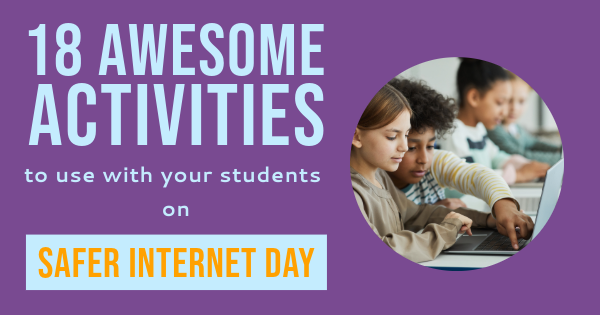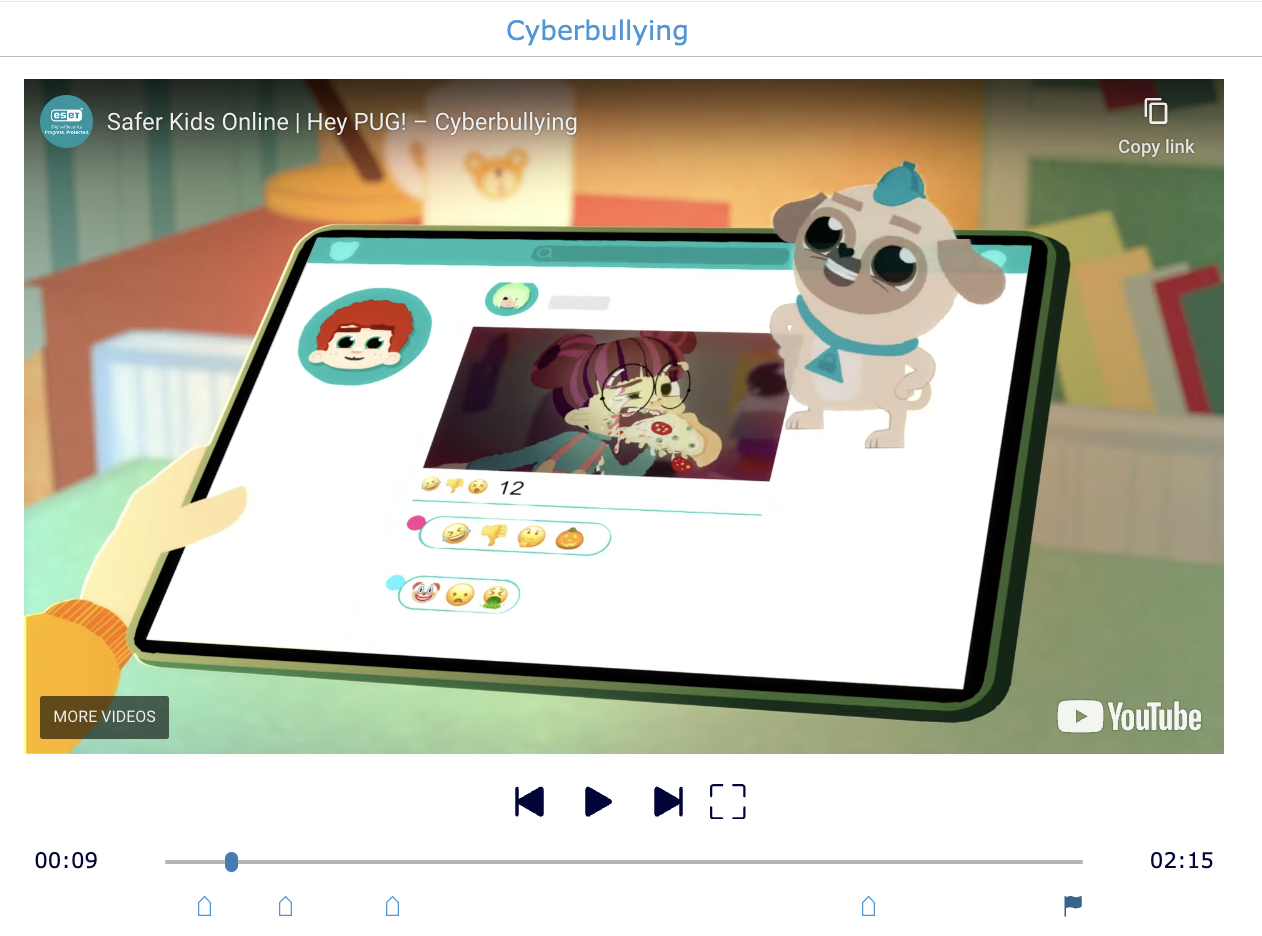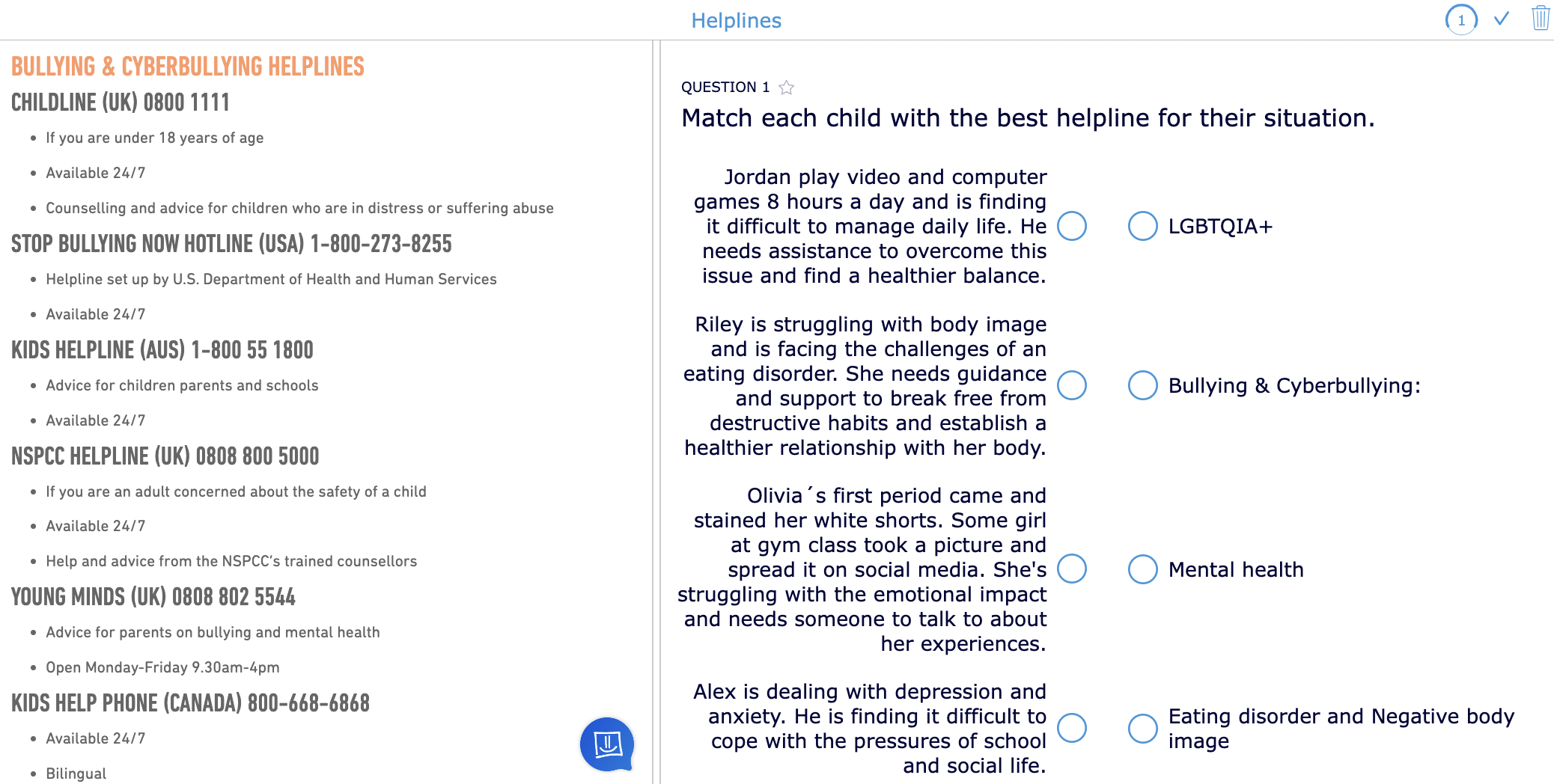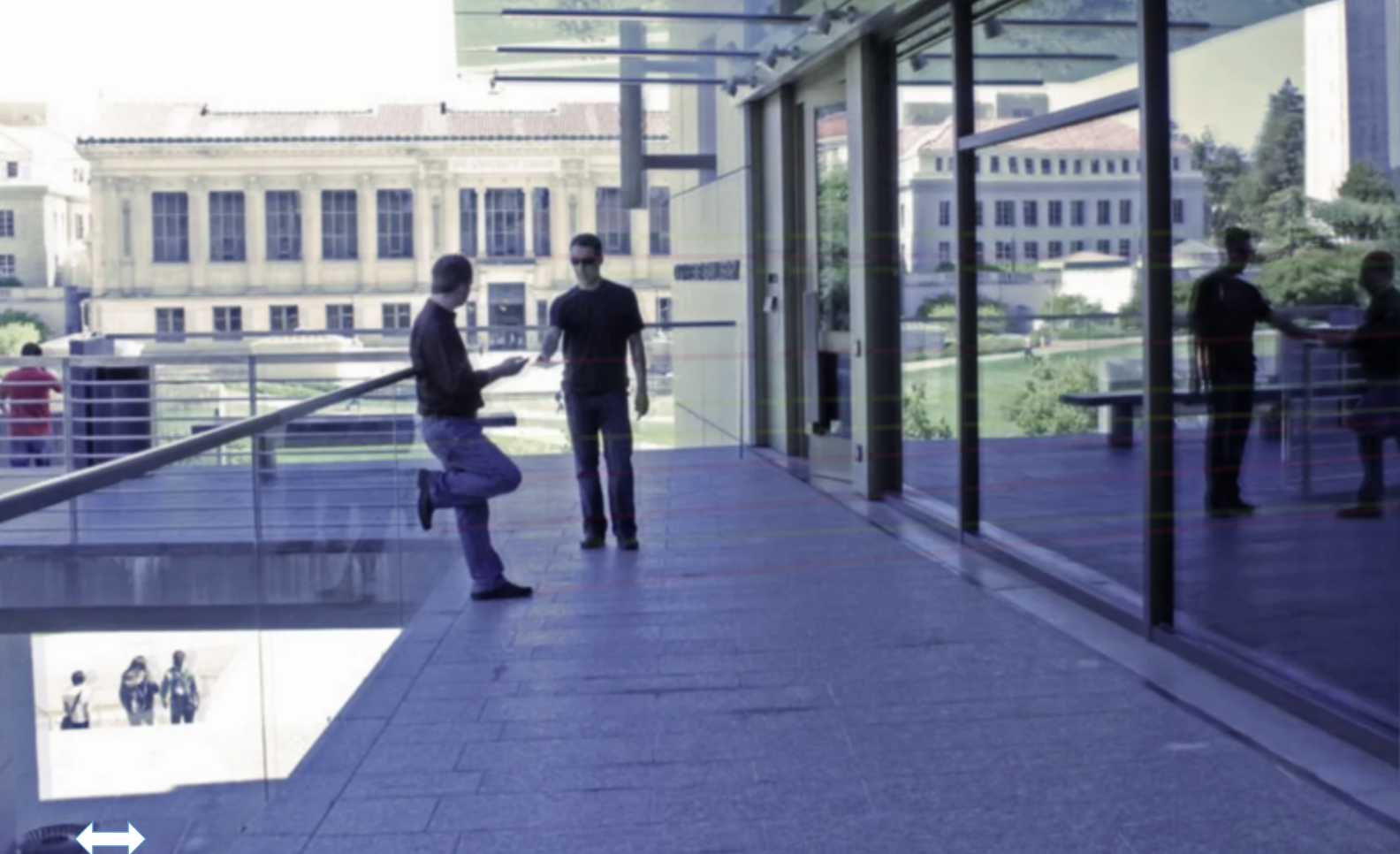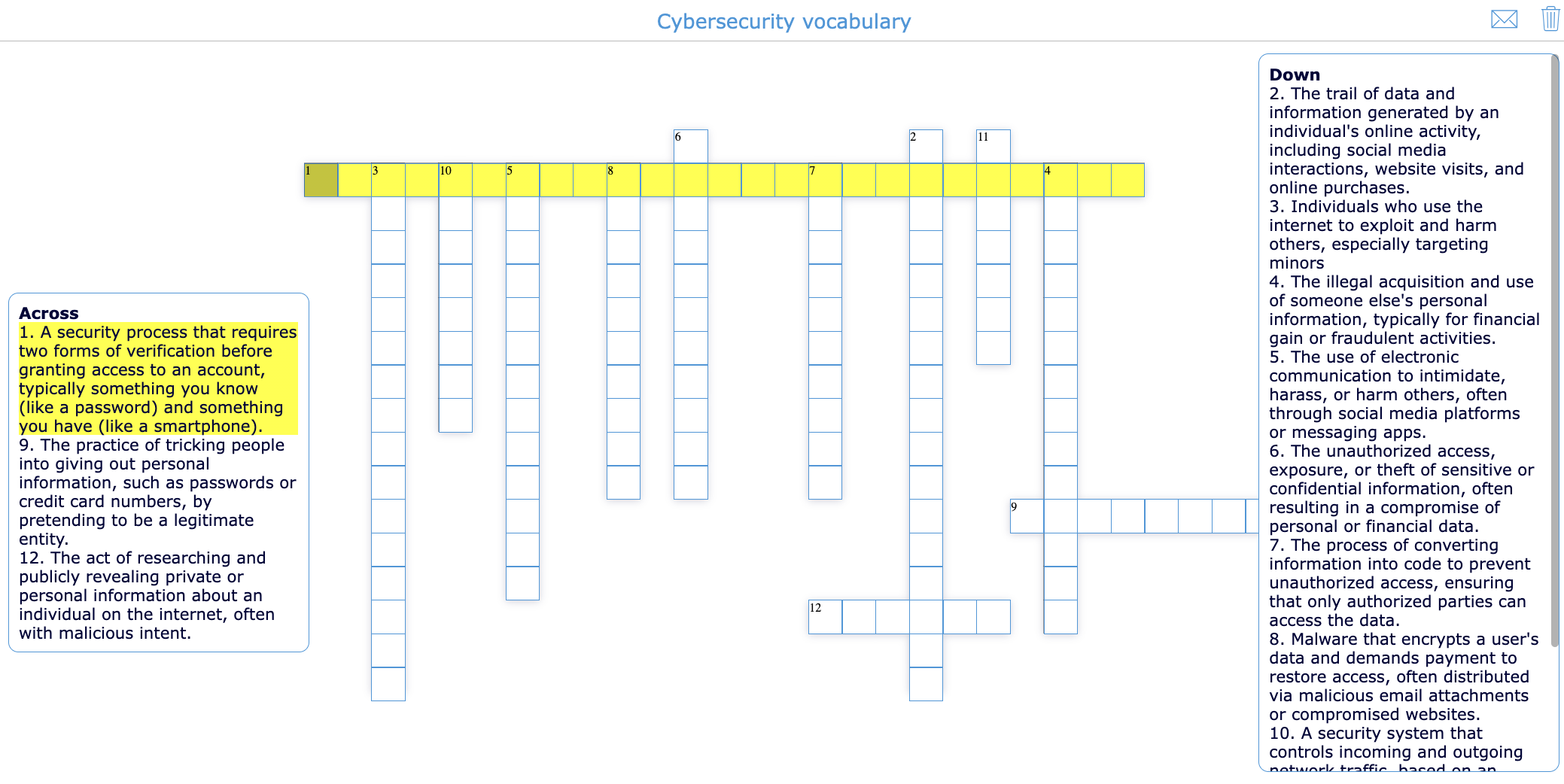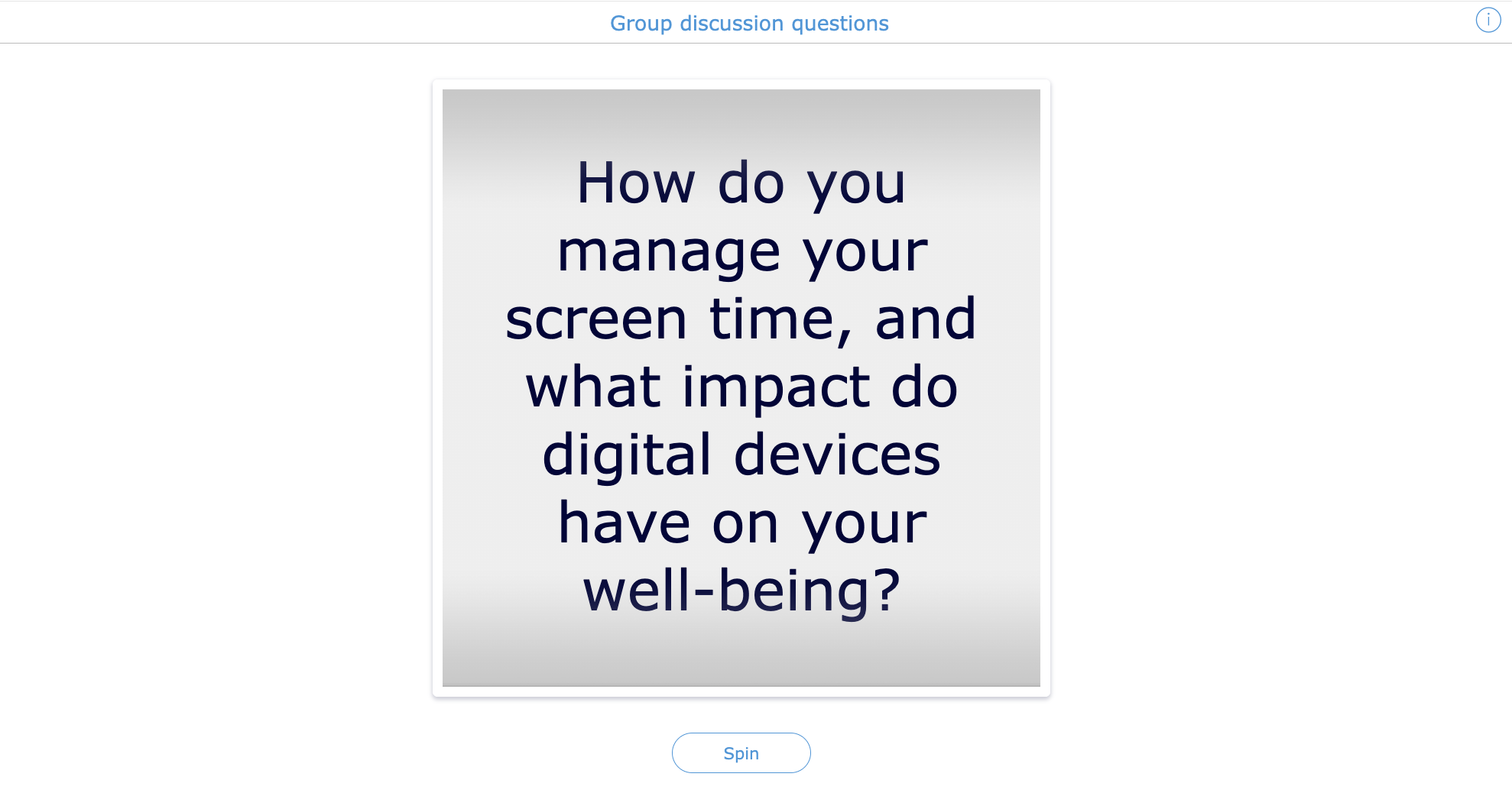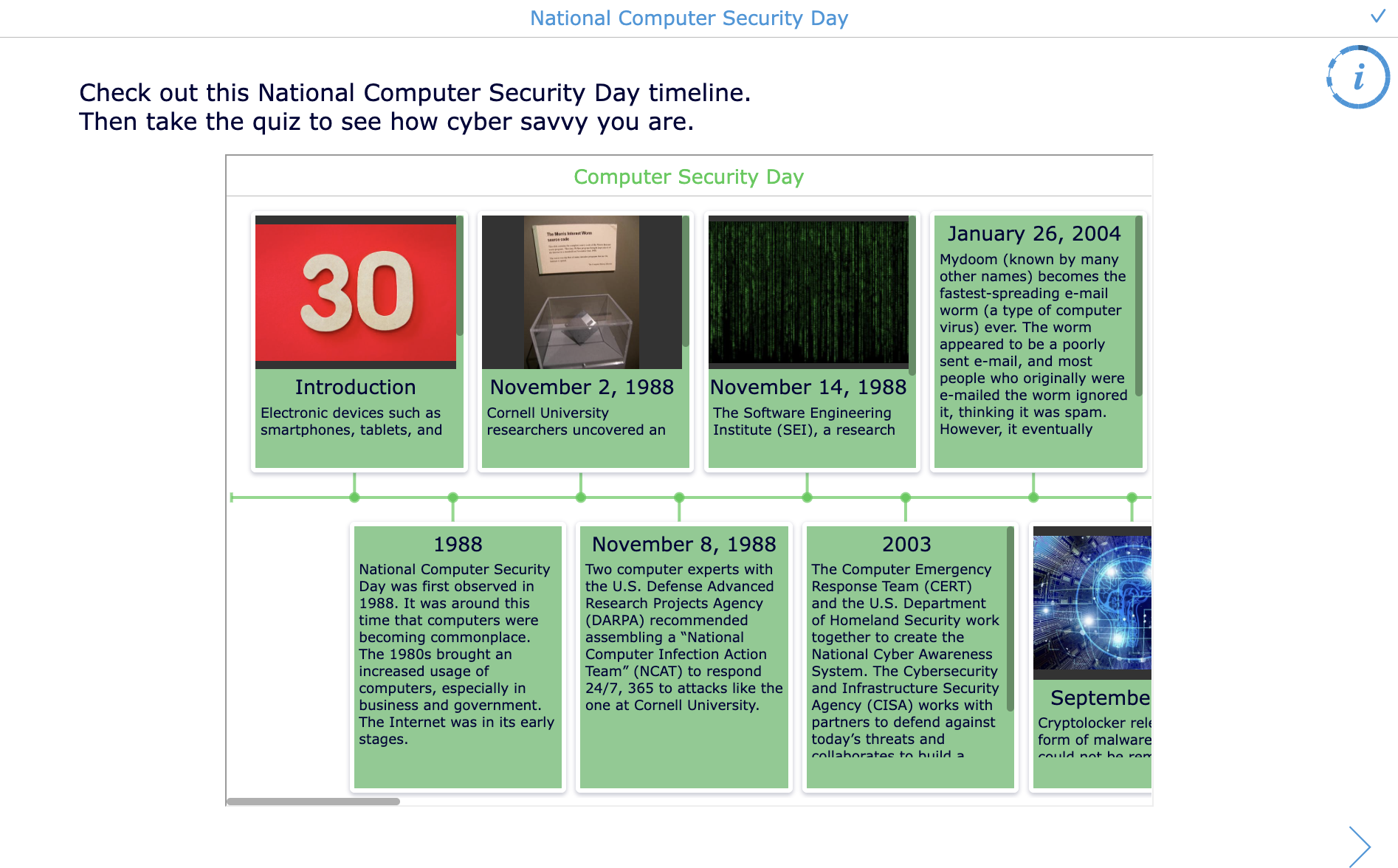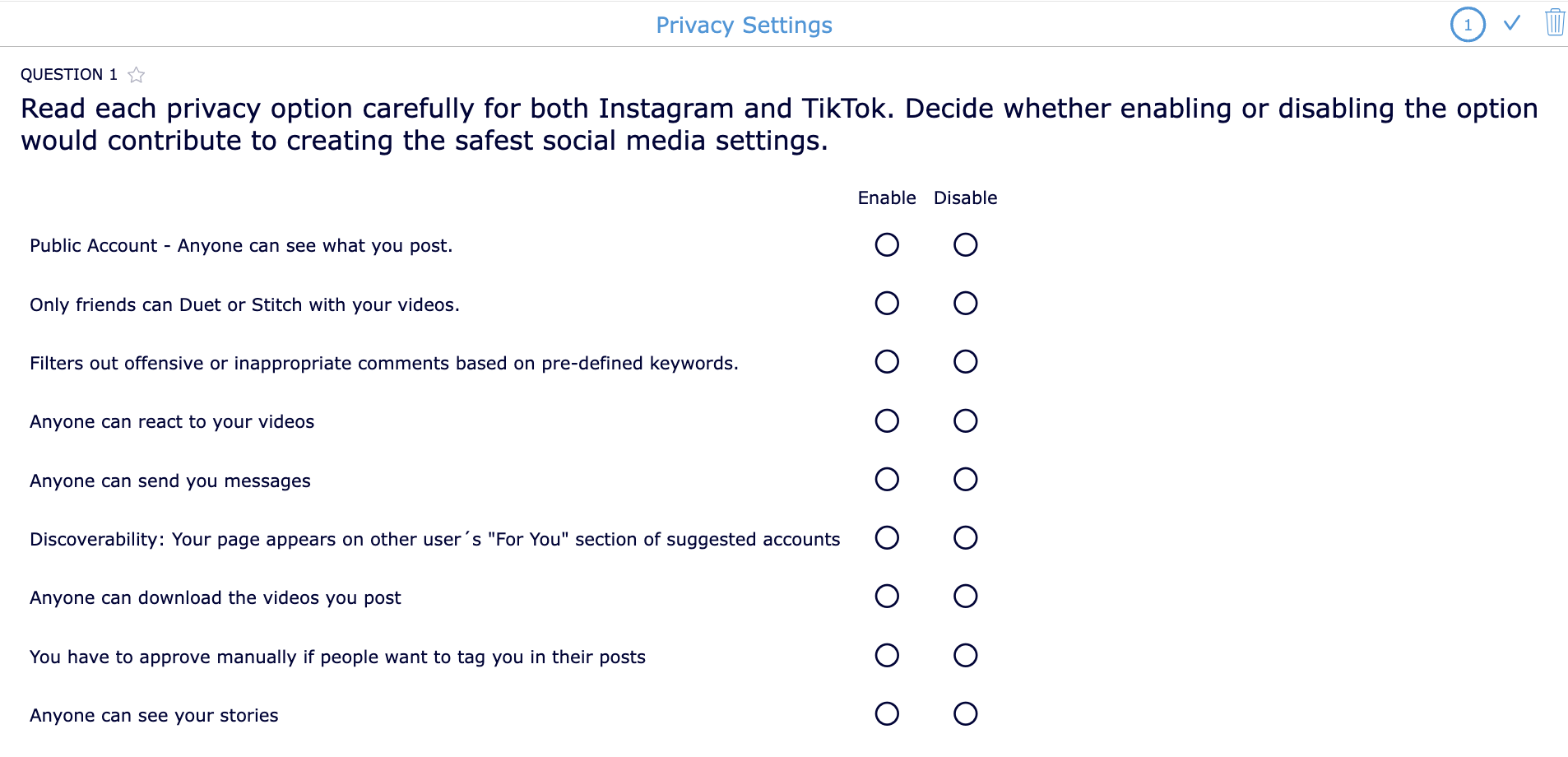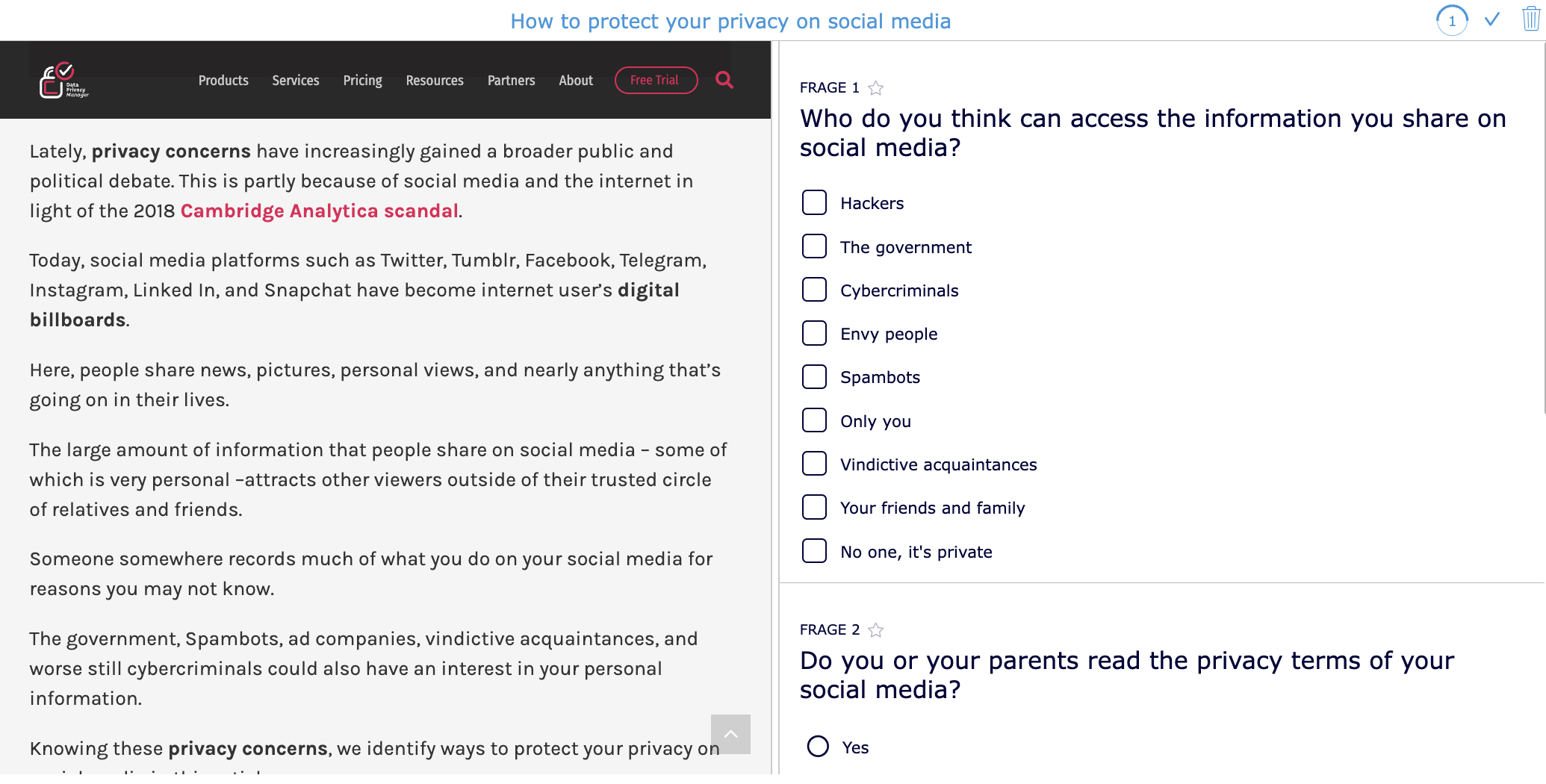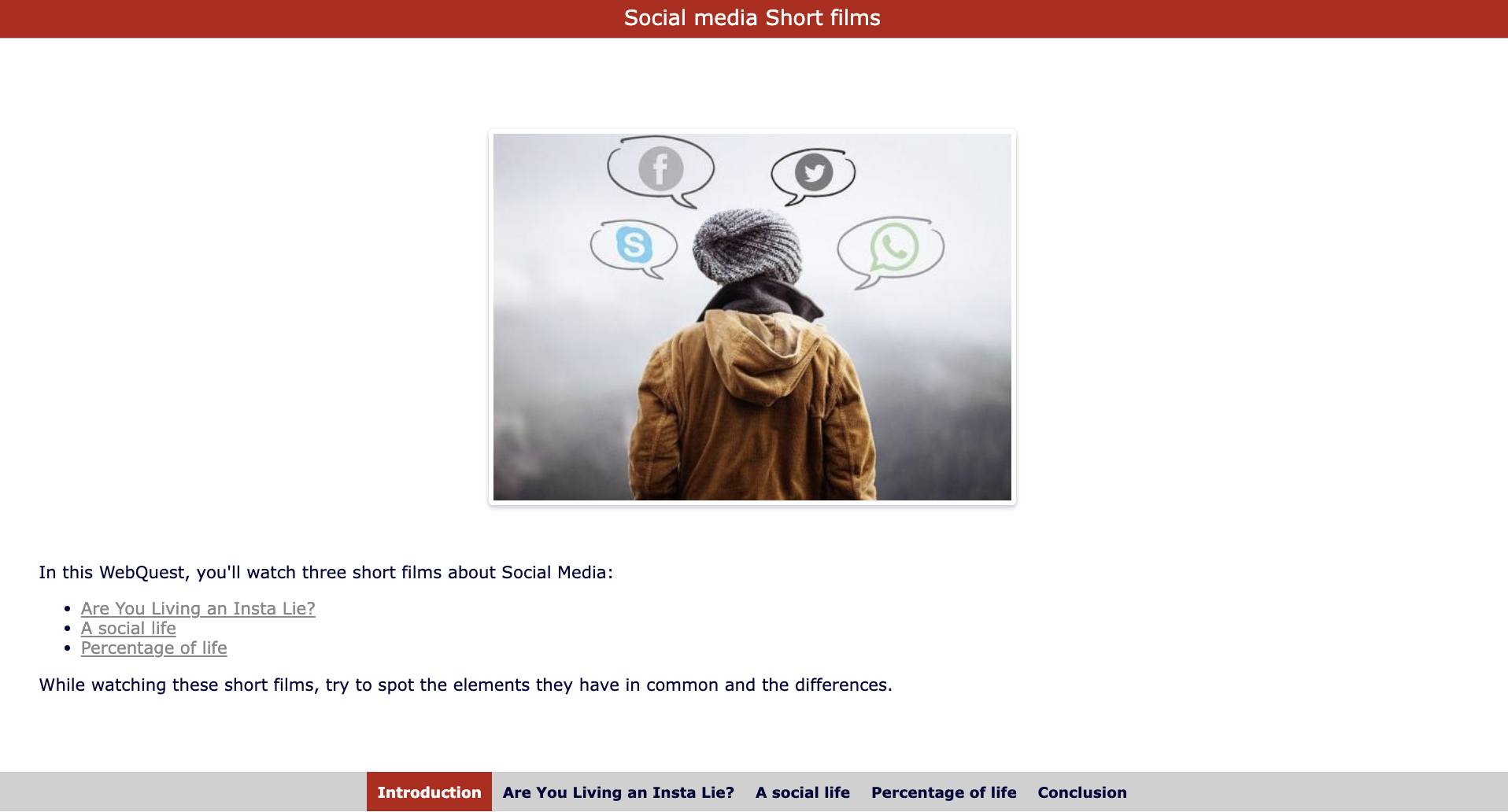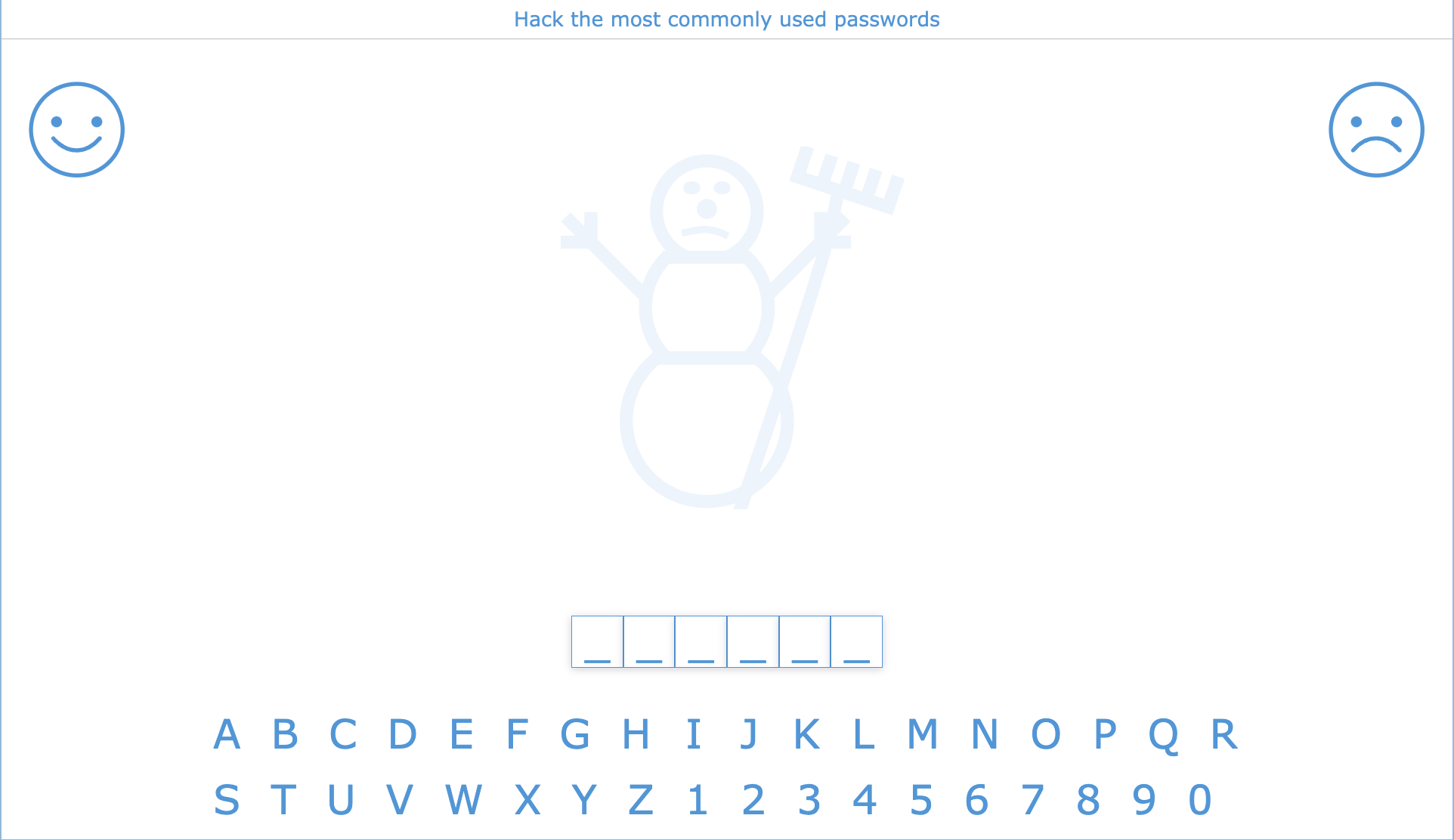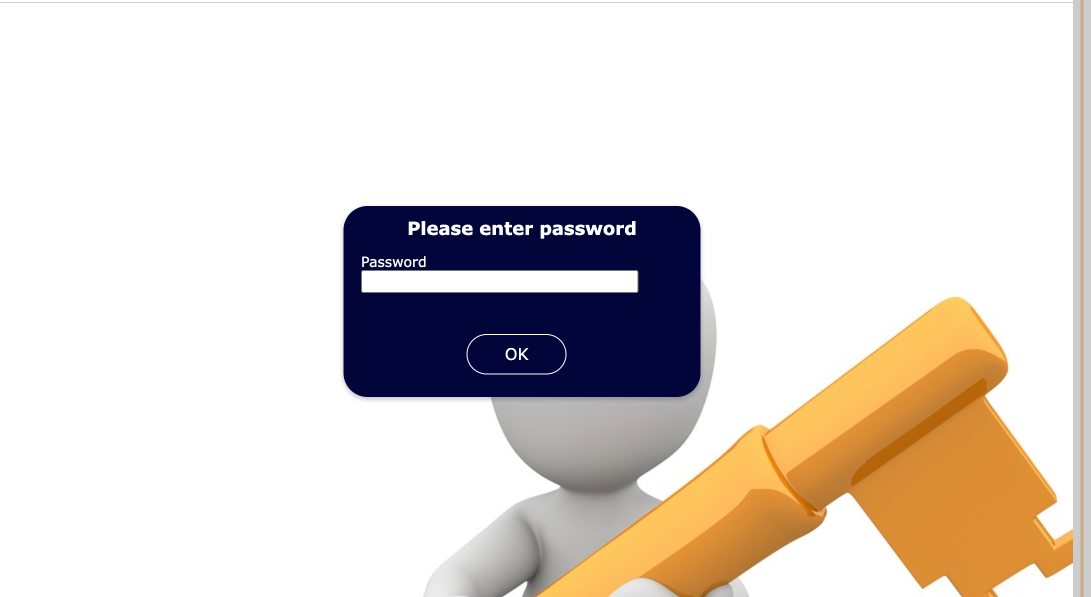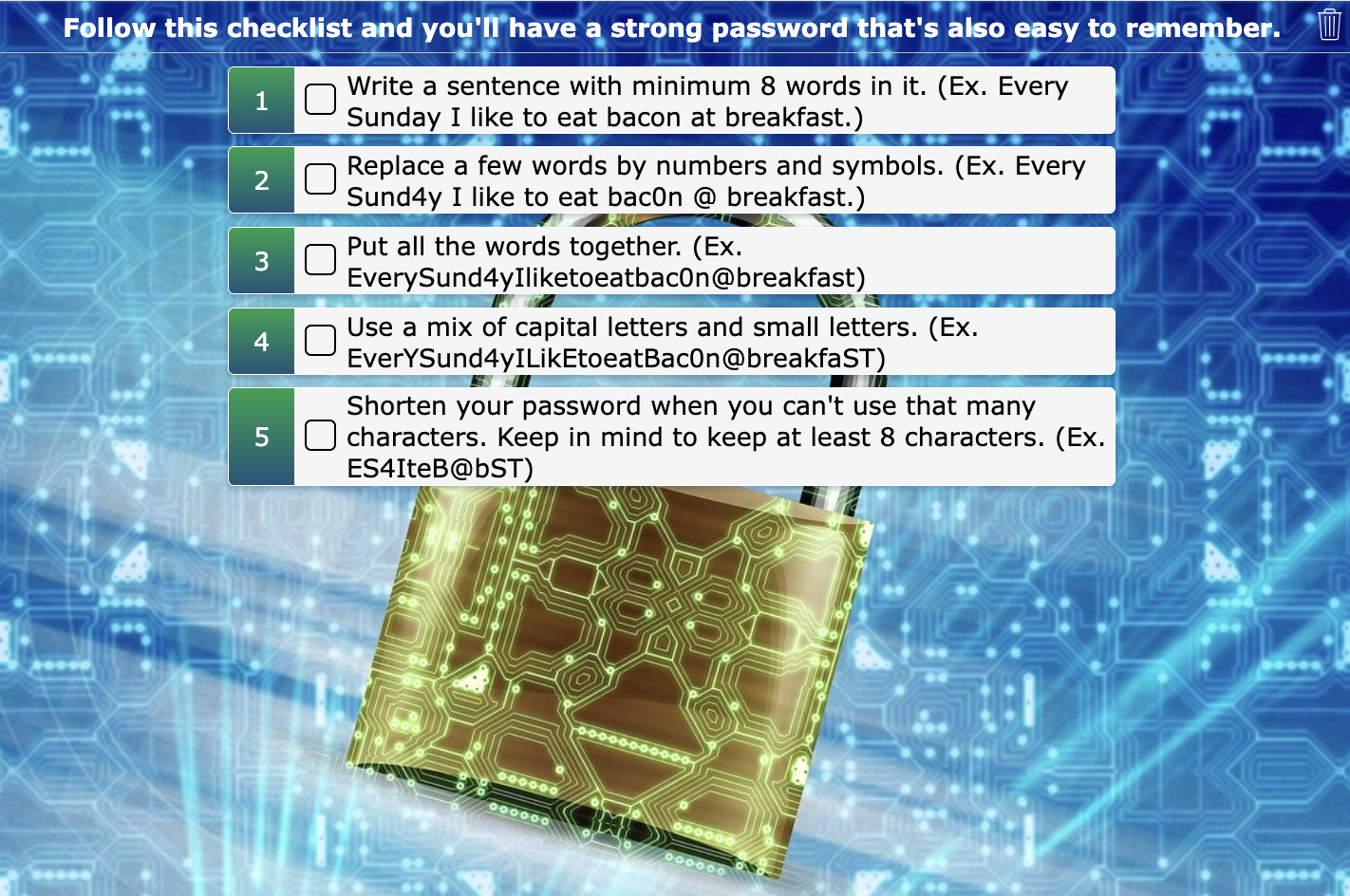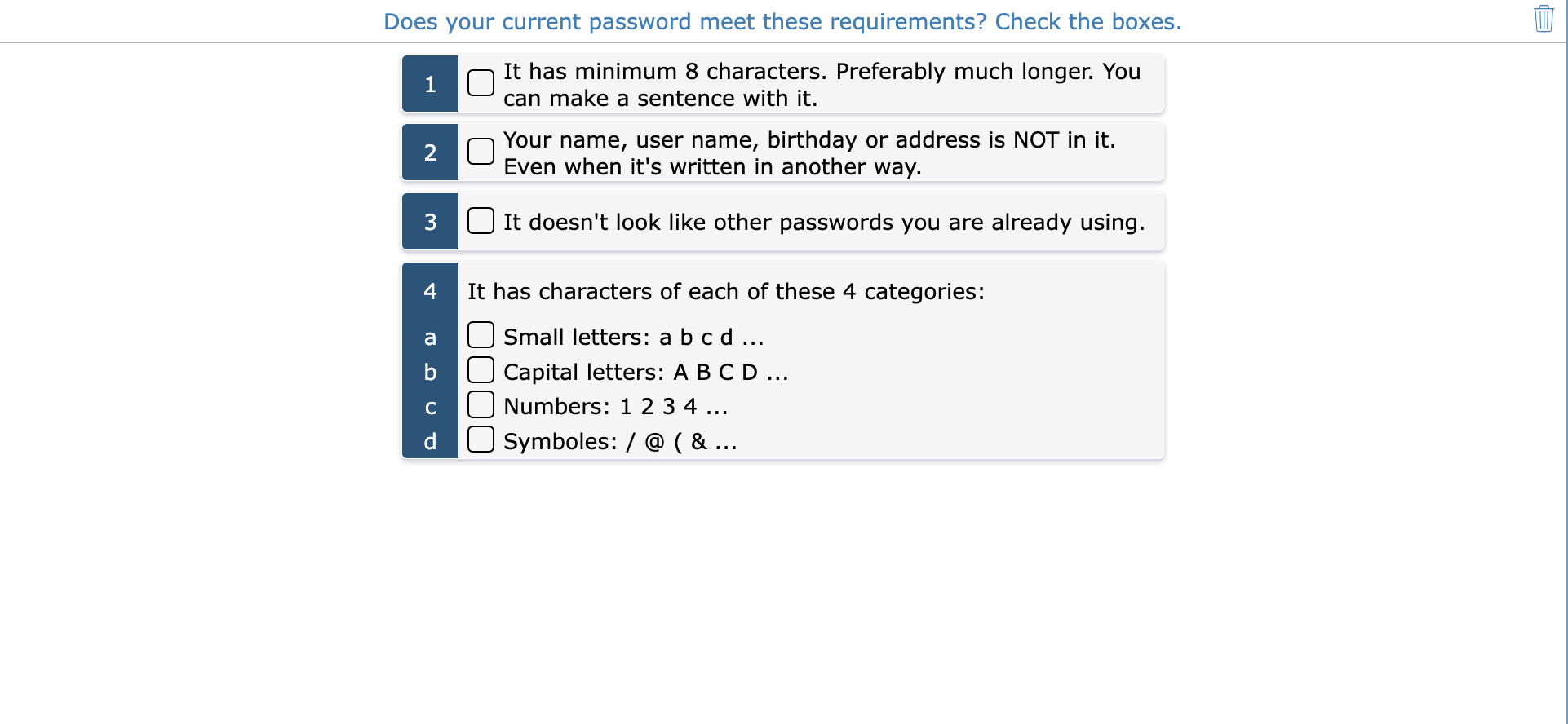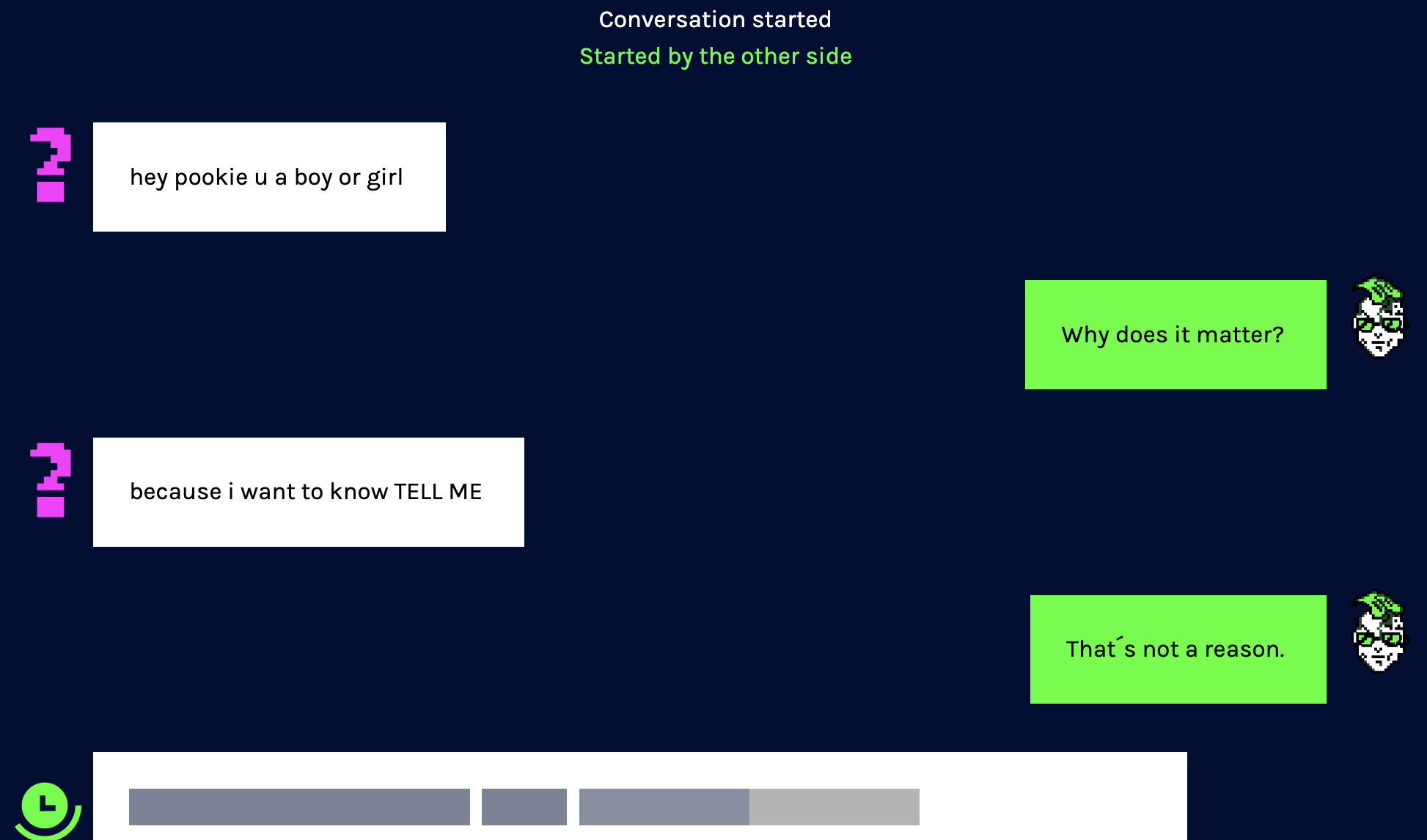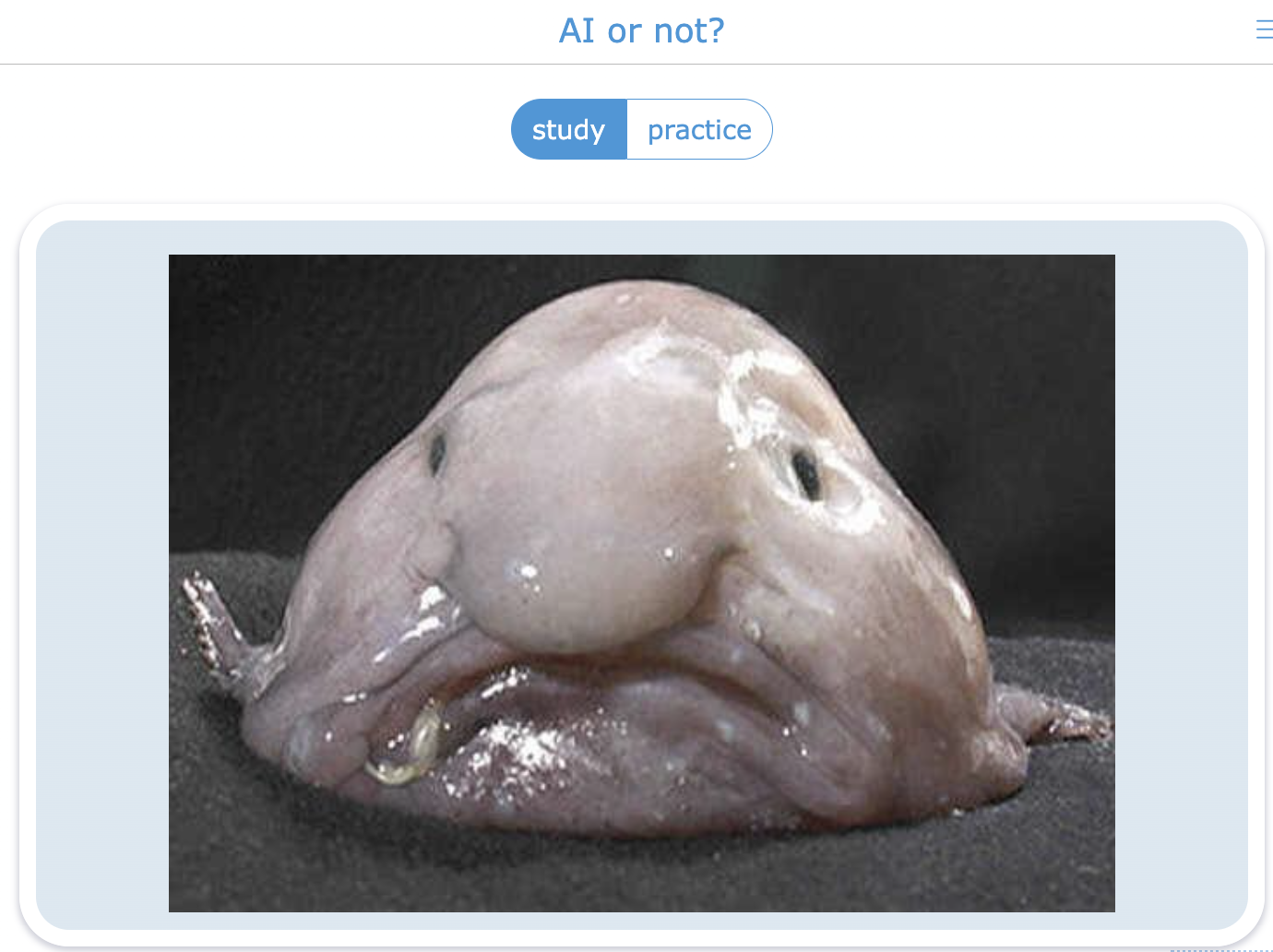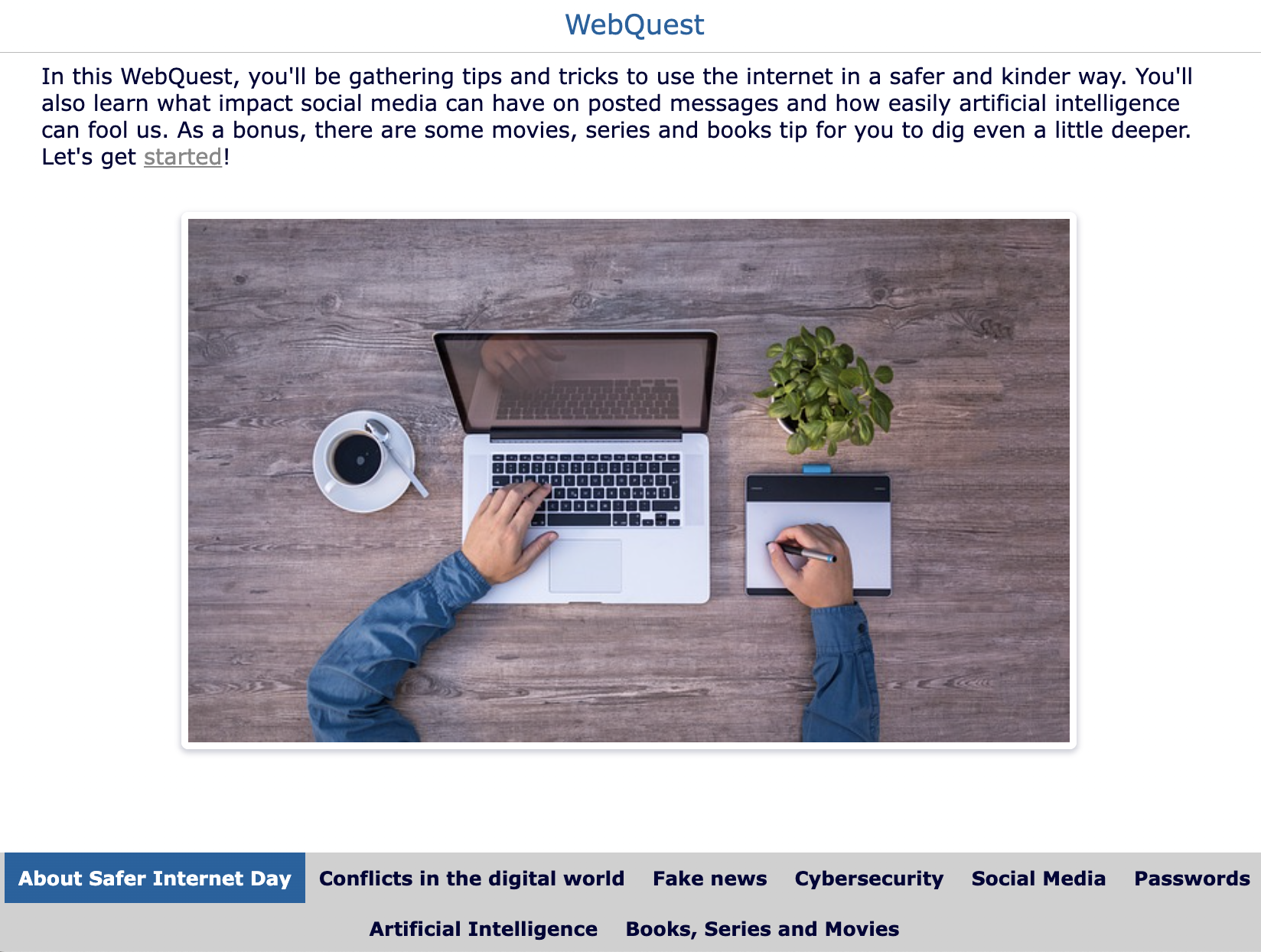18 Awesome Activities to use with your Students on Safer Internet Day
 Julia Barreiro —
Julia Barreiro —
February is approaching, and with it, schools around the globe take part in Safer Internet Day. In 2024, it’s taking place on the 6th of February. This annual event is a call to action for individuals, communities, and organizations to create a safer and more secure online environment.
In the past we had published this other post on digital citizenship and last week we published a comprehensive blog post on cybersecurity in schools, including some cybersecurity lesson ideas. In this blog post, I’m bringing ready-to-use classroom activities on safer internet, which you can include in your lesson plans on Safer Internet Day to approach it from different perspectives. To explore our engaging activities for Safer Internet Day 2024, click on the teacher’s link and copy it to your BookWidgets account.
Haven’t got one yet? No worries, you can use it for free for one month, and creating your account is simple, easy and safe. Don’t worry. Once you make widgets, you can access and share them with your students even after the trial period.
You can read this blog post from top to bottom or jump straight to the section and lesson plans for Safer Internet Day that interests you most:
- Safer Internet Day
- Conflicts
- Fakes
- Cybersecurity
- Social Media
- Passwords
- Artificial Intelligence
- Miscellaneous
- Bonus
Before we go on to see the activities, let’s learn more about Safer Internet Day.
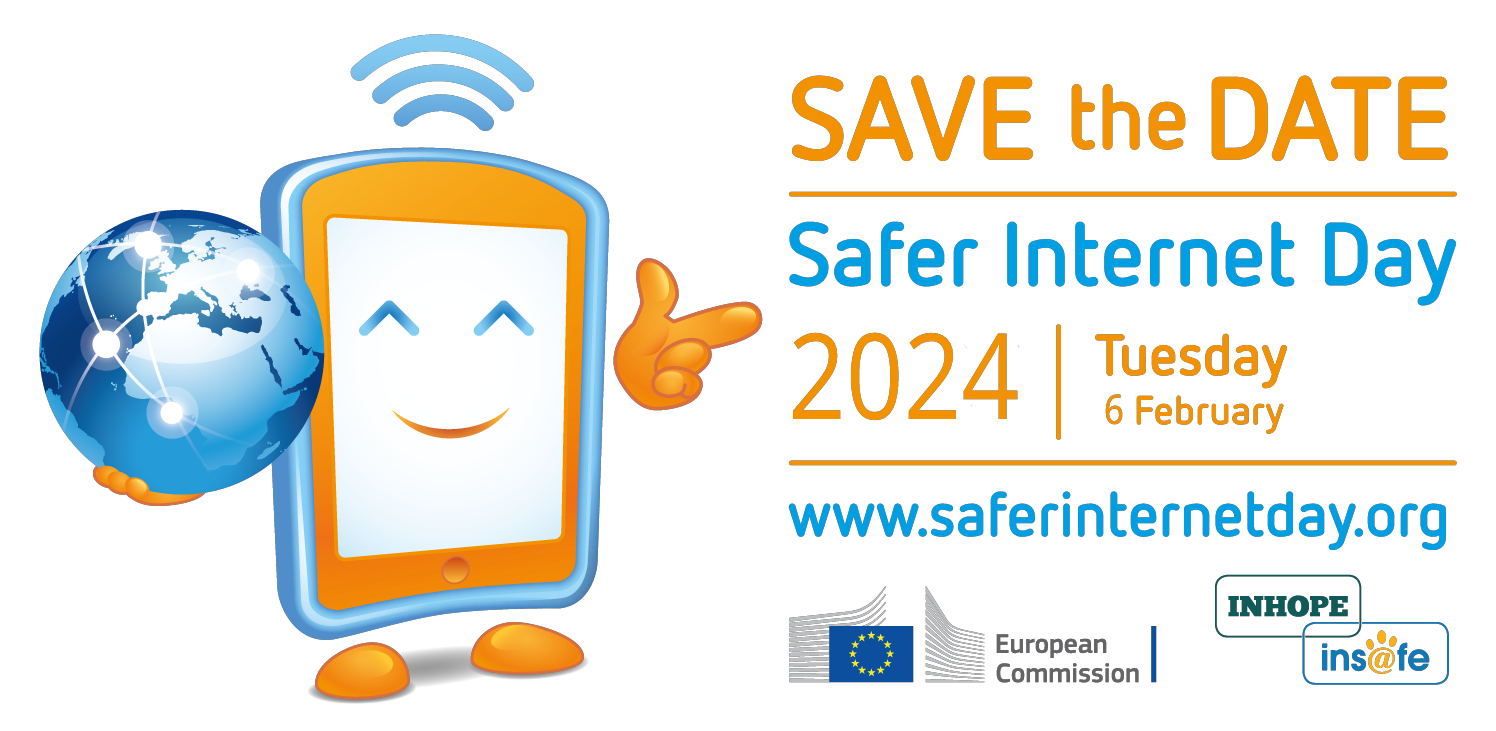
Safer Internet Day, initiated by the European Union in 2004, has since grown into a worldwide campaign involving millions of people in over 170 countries. Its mission is to promote a safer and more responsible use of online technology, particularly among children and young people. The campaign aims to teach students about cyberbullying, spotting fake news and images, creating strong password and protecting students’s privacy. Teachers around the world dedicate some time in the month of February to raise awareness of online risks, provide resources for safer online practices, and encourage dialogue between stakeholders, including parents, educators, policymakers, and internet users of all ages. Collaborative efforts between governments, NGOs, and the private sector are vital to address emerging threats and stay ahead of evolving risks in the digital space.
Beyond technical measures, Safer Internet Day emphasizes the importance of cultivating a culture of respect and empathy online. Encouraging respectful communication, discouraging cyberbullying, and fostering inclusive digital spaces are essential aspects of creating a positive online environment. Parents, educators, and community leaders play pivotal roles in instilling these values in the younger generation.
On that note, let’s take a look at the first activity we’ve created for Safer Internet Day.

Conflicts
Below you will find some lesson ideas on cyberbullying that might help your students deal with conflicts online (as well as offline) if they’re ever in this position.
1 - Cyberbullying
Not everyone who commits some kind of bullying does that intentionally and teaching students about cyberbullying is not always easy. This classroom activity on cyberbullying helps raise awareness to a type of widespread virtual conflict and will make your students reflect on how to go about it if they ever find themselves in this situation.
2 - Helpline awareness
Children and teenagers are often not aware that they do have someone they can turn to if they’re being victims of bullying or struggling with addiction, violence, or mental health issues. This split worksheet helps students in the USA, UK, and Australia to know who they can call if they need support. You can duplicate this activity if you live in one of those countries. If you live somewhere else, you can search for similar websites with updated lists or create your own to include in your lesson plans on Safer Internet Day.

Fake news and images
We’ve dedicated an entire blog post to Fake News with a teacher guide to fact-checking them. In that post, you will also find some related lesson plans and lesson ideas on Fake News that you can to use with your students, so check them out!
3 - Fake Photos
“The problem is that the digital revolution has given anyone with a computer the ability to broadcast to the world, and that includes those with an agenda to deceive.” - Brian Stelter, American journalist and author
As sad as it may be, our children, educators, and parents need to be made aware that we cannot trust our eyes regarding pictures and videos we see on the internet. Being conscious that Photoshop and similar software are often used to alter photos to fit a political agenda better or create unrealistic beauty standards isn’t enough. We must educate ourselves and teach students how to recognize fake pictures altered by Photoshop or AI and train our eyes to see signs that an image has been doctored. In this lesson activity on Fake News students need to analyze the picture to decide if it’s real or not. After deciding, they can slide the arrow at the bottom to the right to have the truth revealed.
Read this blog article to provide your students with tips on how to identify a fake picture.
4 - Fake News
Fake news has long been used in history, for instance, in the form of political propaganda, to manipulate, wind up, and calm the masses. However, the speed at which news spreads in an era when many people share online content can have catastrophic and tragic consequences.
The classroom activity we propose you use with your students aims to sensibilize students to how easy it is to create and spread fake news, how to identify them, and what to do when facing one.
Divide the class into groups of three and have each student of each group create one piece of fake news. Brainstorm some topics that might be interesting for them and gather the ideas on a mindmap. You can go through the characteristics of the fake news genre and have them get creative. Exchange the created news with other groups and two other authentic pieces of news. Each group should have one pile of news, with two real and three fake ones, created by another group. Students have to analyze which news is real and which is phony and explain how they came to that conclusion. Teachers of all subjects can use this lesson idea on fake news, as the topics might vary.
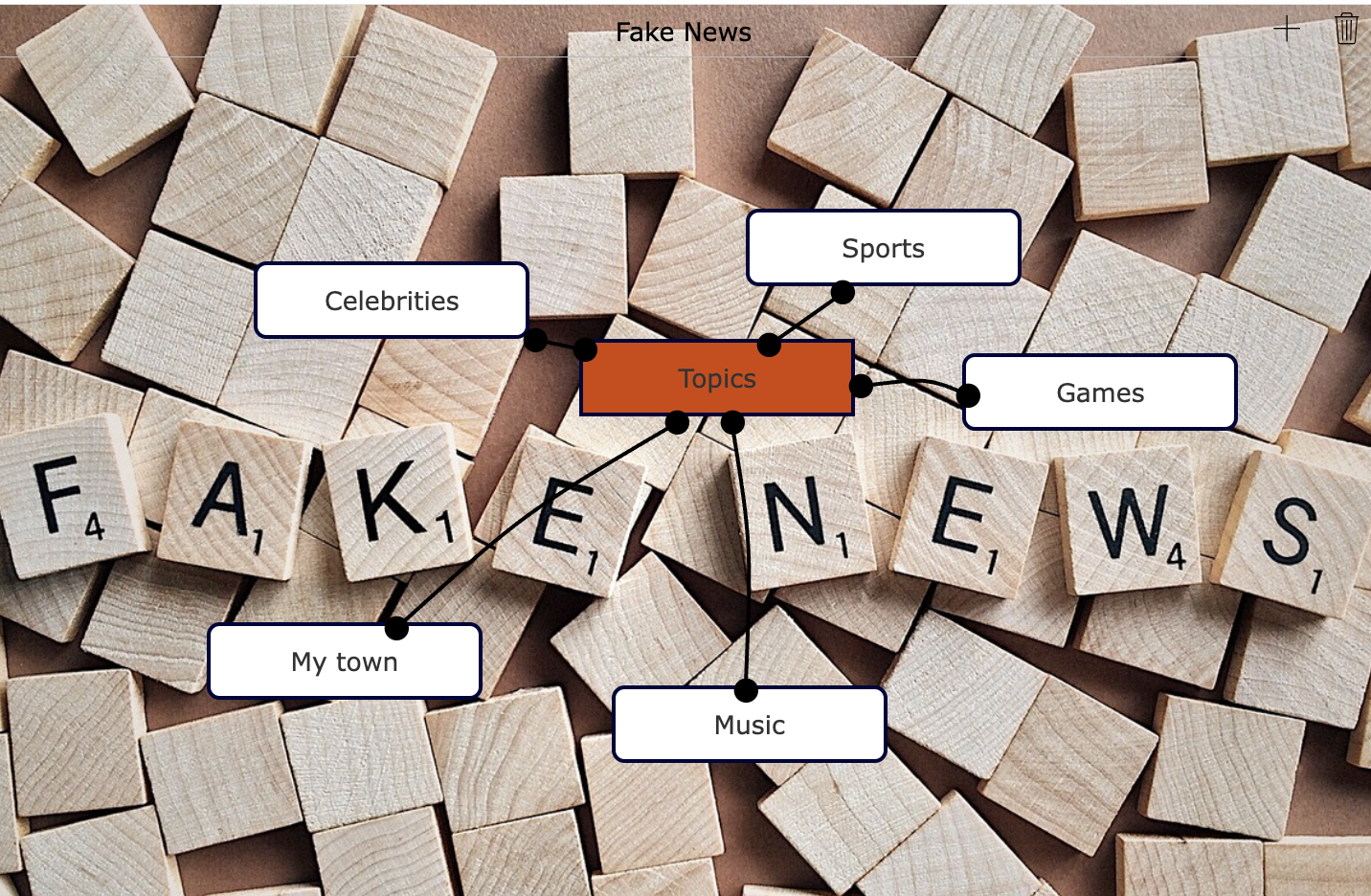
💡 Digital tip: You can have students use this website to make their fake news look real and rewrite your own utilizing the same template so they all look identical.

Cybersecurity
When we think of a safer internet, we must consider our online environment and be aware of the settings that can help protect our privacy.
5 - Cybersecurity vocabulary
A great way to warm up your students for a cybersecurity lesson and enhance their cybersecurity literacy is by starting the class with a crossword puzzle. Take a look at ours and feel free to duplicate it and adapt the words and descriptions to your needs. Ideally, classroom activity should be used in the beginning or end of a lesson on Safer Internet Day.
6 - Group discussion on a safer internet
It is much more effective for students to reflect on questions concerning a safer internet than simply giving them a list of dos and don’ts. We’ve created this randomness wheel with discussion topics for Safer Internet Day so your students can discuss in pairs or groups and come up with their thoughts on those essential subjects. These topics can also be used as inspirations for Safer Internet Day lesson plans.
7 - National Computer Security Day
We’ve prepared a timeline with milestones of the development of computers and safety-related issues. Maybe you’ve seen this before on our Awareness Days post. After checking out the timeline, take the quiz. Safer internet is a vast topic that can be overwhelming. It’s hard to keep track of everything we should have when navigating the virtual world, so we’ve prepared this quiz with some questions to help you and your students have things in mind.

Social Media
8 - Privacy settings on Social Media
How often do you read the privacy settings of the websites and apps that you regularly use? Turning specific settings on or off allows us to have at least some control of our privacy, for instance, in social media. And yet most people - young and old - don’t read it.
On this digital worksheet, we bring you some of the privacy settings options of Instagram and TikTok. Your students have to check if they would deactivate or activate each option and have a group discusson on what effects and consequences each option could have. This is a good example of a Safer Internet Day lesson for students, since it relates directly to something they are used to.
9 - Privacy on social media
Teenagers must understand how vulnerable they are on social media and how the information they share there can have negative consequences in their real lives. Safer Internet Day is the perfect opportunity to approach this topic.
On this activity on social media we combine an article with exercises on data privacy for students to check their understanding and reflect on their current and future practices on social platforms.
10 - Social Media short videos
This collection of short films on social media will bring a good change of pace to your class. We have gathered three thought-provoking short films to be included on your lesson plans on social media that are great for a warm-up for a deeper student discussion.

Passwords
Creating safer passwords is something students probably know they should do, but it’s likely that their passwords aren’t safe enough, maybe because they have never had any activities in building a safe password. The interactive classroom exercises below will help them analyze and come up with one. On your lesson plan on safer passwords, combine them in whichever order makes more sense for your students depending on their ages and grades.
11 - Hacking passwords
This classic warm-up activity is repurposed when instead of finding out a word they have to try to hack the most commonly used passwords.
12 - Analysing passwords
To start this password activity, students have to type in one of the unsafest passwords very commonly used (1234). When unlocking the activity, they will be given a list of passwords and have to decide which are safe and which aren’t and reflect on why.
13 - Creating a sentence password
This checklist walks students through the process of creating a sentence password with a simple example.
14 - Checking how safe your password is
Give your students this checklist so they can be sure that the password they created is safe.

Artificial Intelligence
Lesson plans on Artificial Intelligence don’t have to be scary or boring. There are some exciting ways to approach this theme and below you will find some valuable resources that you can use with your students to address this topic.
15-Human or Not
On this website, you will chat with an actual human or an AI Bot. Your students will have to reply to someone’s message in the chat and, after a few exchanges, decide if their interlocutor is natural or not. This game can be a good wrap-up for an entire lesson plan on artificial intelligence in the classroom.
16-AI or not
We have also created a widget to test your students. Here you can duplicate our artificial intelligence activity and edit it if you want to add more pictures, perhaps related to a subject you’re teaching. With our Flashcards widgets, you can also create your own from scratch.

Miscellaneous
17-Comprehensive activity
All widgets (digital activities) created for this post can be combined as one main interactive activity on Safer Internet Day. This type of classroom or project activity is what we call a WebQuest. You can develop a project to be carried out in a week, month, semester, or school year, depending on how often and how fast you want to address the topics with your students. Getting other classes, parents, and the whole school community involved can also be an effective way to create a safer internet.

Bonus
Bonus: Movies, series and book tips
While writing this blog post, several movies (🎬), series (🎞️), and books (📚) came to mind, so we’ve decided to include six tips in case you want to draw inspiration from some of them or think of this theme from different perspectives. So check out our list with books, movies and series to make your Safer Internet Day even more fun.
🎬 Who am I - No System is Safe (Baran bo Odar, 2014): The film delves into various cybersecurity themes, such as hacking, digital anonymity, and the ethical implications of exploiting vulnerabilities in systems. It raises questions about the power and responsibility that come with advanced technological skills, highlighting the potential dangers of unchecked hacking activities.
🎞️ Shut up and dance, Episode 3 of Season 3 of Black Mirror (James Watkins, 2016): The narrative revolves around Kenny, a teenager who becomes the target of anonymous hackers who capture compromising footage of him through his laptop’s webcam. Threatened with exposure unless he follows their instructions, Kenny is coerced into participating in a series of increasingly morally ambiguous tasks.
🎞️ Westworld (Jonathan Nolan, Lisa Joy, 2016): The series raises questions about the control and management of sophisticated AI systems, emphasizing the need for robust cybersecurity measures to prevent unauthorized access, manipulation, or exploitation.
📚 The Filter Bubble: How the New Personalized Web Is Changing What We Read and How We Think (Eli Pariser, 2011): This book discusses how personalized algorithms on social media platforms create echo chambers that can reinforce narrow perspectives, while also influencing perceptions of beauty.
🎞️ Upload (Greg Daniels, 2020): From a cybersecurity perspective, “Upload” delves into the vulnerabilities and ethical concerns associated with digital existence. The show raises questions about the safety and privacy of personal data stored in the virtual realm and the potential for manipulation, hacking, and exploitation within artificially created afterlife environments.
🎬 The Social Dilemma (Jeff Orlowski, 2020): This movie explores the ethical complexities and societal implications of social media platforms through a compelling documentary format. The film exposes the manipulative algorithms designed by tech giants to captivate and influence users, unraveling the unintended consequences, such as the spread of misinformation and polarization. Former insiders and experts provide firsthand accounts, urging viewers to reflect on the ethical responsibilities of tech companies and the impact of technology on individual and collective well-being. The documentary serves as a reminder of the need for transparency, accountability, and a reconsideration of our relationship with technology in an increasingly interconnected world.
Wrap up
Safer Internet Day is a powerful reminder that everyone is responsible for a safer online world. By staying informed, promoting digital literacy, and actively participating in initiatives that advocate for a safer internet, we can collectively create a digital landscape that empowers rather than endangers. As we celebrate Safer Internet Day, let us commit to building a future where the online world reflects the best of humanity – a space for collaboration, innovation, and safety.
You can find all ready-to-use activities used in the examples here and duplicate them to your account to edit them and share them with your students.
I recommend you check out the official Safer Internet website. There, you can find out what school activities are organized in your country and find numerous resources on this topic.
I’d like to know which of these classroom activities is your favorite and what other ideas and lesson plans for Safer Internet Day you have, so do share with us. Let us know on Twitter - X - and join our Facebook community to share your own Safer Internet Day BookWidgets activity with other teachers.
Feel free to connect with me on LinkedIn. I’m looking forward to hearing from you.
